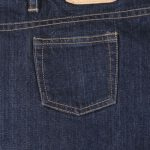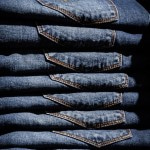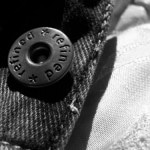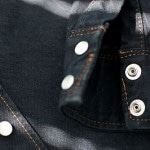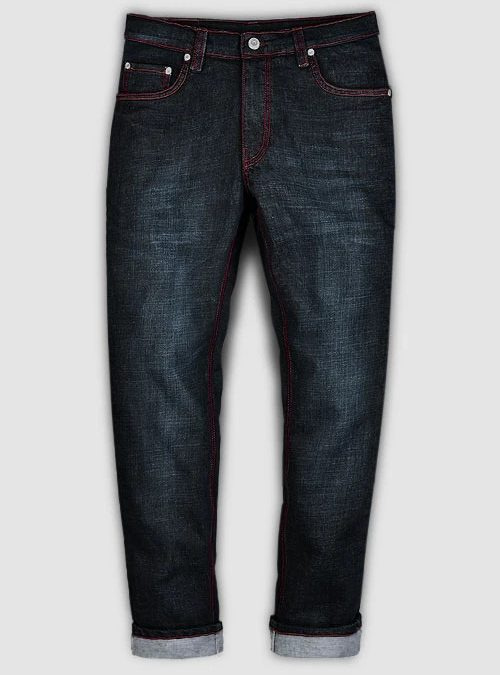
by MakeYourOwnJeans | jeans |
How many pairs of jeans do you own? Research shows that most people own an average of six or more pairs of jeans. They are among the most versatile type of trousers on the market. But most people wear the same ordinary-looking jeans day after day. To spice up your outfits, you should consider wearing an alternative type of jeans, such as the Chicago Blue Stretch Hard Wash Jeans. An Introduction to the Chicago Blue Stretch Hard Wash Jeans The Chicago Blue Stretch Hard Wash Jeans are stylish denim jeans that feature a dark blue, indigo color along with red thread. Like with other types of stretch jeans, they are made of stretch denim. Stretch denim is a hybrid material consisting of cotton and elastic material. The Chicago Blue Stretch Hard Wash Jeans are specifically made of 97% cotton and 3% lycra. Even with just 3% lycra — lycra is an elastic material — they are noticeably stretchier and more elastic than traditional jeans made of 100% cotton denim. The Chicago Blue Stretch Hard Wash Jeans are made of indigo-colored stretch denim consisting of cotton and lycra. And the thread used in their construction is red. The combination of indigo denim and red color results in an attractive, eye-catching appearance that stands out from other types of jeans. There are many other types of jeans available for sale, most of which feature blue denim as well. You can find jeans in both light blue and dark blue denim. The Chicago Blue Stretch Hard Wash Jeans are specifically made of dark blue, indigo denim. They feature indigo denim combined with...
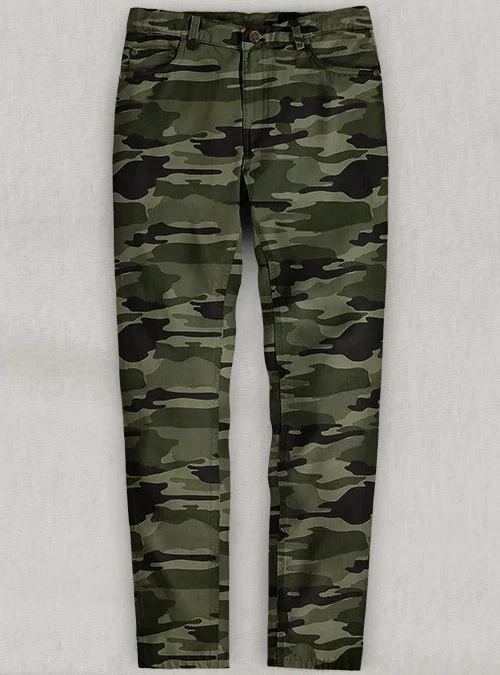
by MakeYourOwnJeans | jeans |
If you’re in the market for a new pair of jeans, you may want to choose camo jeans. Available for sale here at MakeYourOwnJeans, they offer a unique style that stands out from most other types of jeans. Camo jeans are defined by their use of a camouflage pattern. With their camouflage pattern, they offer a unique style that’s perfect for most casual outfits. There are several things you need to know about camo jeans, however. Overview of Camo Jeans Camo jeans are denim jeans that feature a camouflage pattern. They don’t feature a solid color, nor do they feature a conventional striped or plaid pattern. Rather, all camo jeans feature a camouflage pattern. Camouflage patterns are associated with military apparel. For over a century, militaries throughout the world have incorporated camouflage into their respective uniforms. It “breaks up” the human figure so that military personnel are more difficult to spot by their adversaries. Some camouflage patterns are green, whereas others are gray, blue or beige. Regardless, camouflage patterns consist of irregular shapes in a variety of different, albeit similar, colors. Camo Jeans vs Traditional Jeans Both camo jeans and traditional jeans are made of denim. As you may know, denim is a type of twill fabric. It’s made by passing the weft thread — typically cotton thread — under two or more warp threads. Whether you’re shopping for camo jeans or traditional jeans, they will probably be made of denim. The difference between camo jeans and traditional jeans lies in their appearance. All camo jeans feature a camouflage pattern. Traditional jeans, on the other hand, typically feature a...

by MakeYourOwnJeans | jeans |
When researching the different types of jeans, you may come across selvedge denim jeans. They’ve become a popular alternative to traditional denim jeans. You can find selvedge denim jeans in different cuts, colors and sizes. Some of them even contain a small amount of an elastic material in their construction. But selvedge denim jeans aren’t ordinary, traditional denim jeans. They stand out from their traditional counterparts while offering a premium look and feel. Selvedge Denim Jeans Defined Selvedge denim jeans are characterized by their use of an old-style shuttle loom. All jeans are made on a loom. Selvedge denim jeans are simply made on an old-style shuttle loom. They are known as “selvedge denim jeans” because they feature a “self-finished” edge. When inspecting the bottom of the pant legs, for instance, you’ll notice a band around the bottom. Selvedge denim feature bands consisting of a self-finished edge at the bottom of the pant legs. You won’t find these bands on other types of jeans. Regardless, selvedge denim jeans are defined as denim trousers that are made on an old-style shuttle loom and feature a self-finished edge. Traditional vs Selvedge Denim Jeans: What’s the Difference? Most jeans can be classified as either traditional denim jeans or selvedge denim jeans depending on how they are made. Traditional denim jeans are made on a modern loom. Selvedge denim jeans, on the other hand, are made on an old-style shuttle loom. Modern looms are shuttleless. Many manufacturers prefer these modern, shuttleless looms because of their ability to quickly produce material. While old-style shuttle looms are slower, though, they are capable of producing selvedge...
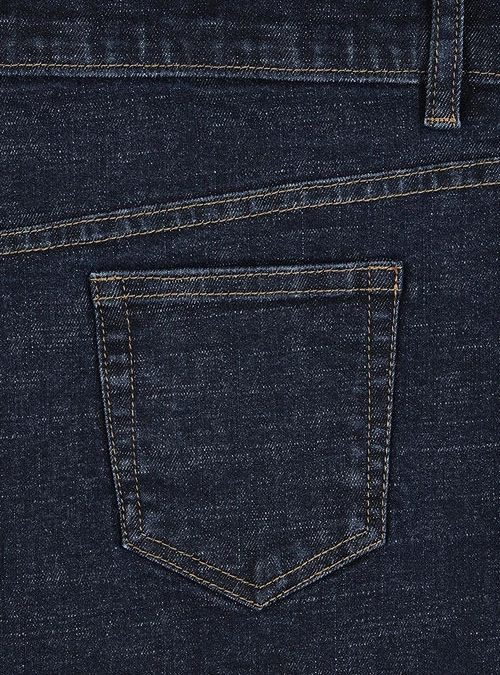
by MakeYourOwnJeans | jeans |
Not all blue jeans are the same. In addition to traditional blue jeans, there are sailor blue jeans. Available for sale here at MakeYourOwnJeans, sailor blue jeans feature a unique color that distinguishes them from all other blue jeans. You can find them in different cuts, and you can find them in different sizes. Sailor blue jeans are simply characterized by their color. For a better understanding of sailor blue jeans, including how they differ from traditional blue jeans, keep reading. Overview of Sailor Blue Jeans Sailor blue jeans are high-quality denim jeans that feature a sailor blue color. They are made of denim. All jeans, of course, are made of either plain denim or stretch denim. Sailor blue jeans are still made of denim, but they feature a specific color known as sailor blue. Sailor blue is a dark blue color with a purplish hue. It’s darker than light blue and normal blue. And sailor blue also has a distinct purplish hue that makes it stand out. Sailor blue jeans feature this sailor blue color. Manufacturers make them using sailor blue-dyed denim. They dye the denim to achieve a sailor blue color, after which manufacturers use this newly dyed denim to make sailor blue jeans. Sailor Blue Jeans vs Traditional Blue Jeans While they are made of the same denim material, sailor blue jeans and traditional blue jeans aren’t the same. Sailor blue jeans feature a sailor blue color. Traditional blue jeans, on the other hand, feature a lighter blue color. You can see an example of sailor blue jeans in the photos here. The jeans depicted in...
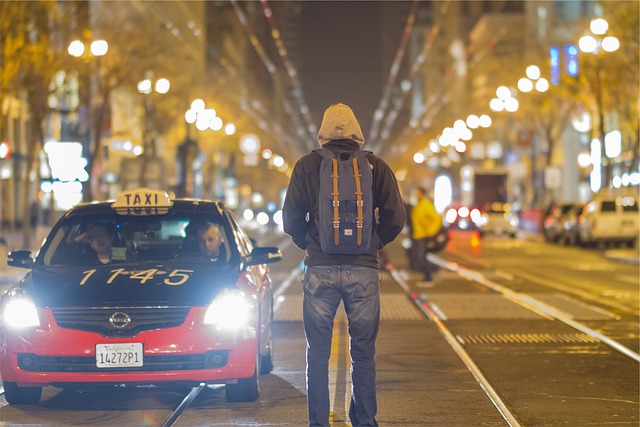
by MakeYourOwnJeans | jeans |
Have you heard of low-rise jeans? Like all jeans, they are denim trousers in which the weft thread goes under two or more warp threads. Low-rise jeans are simply distinguished from all other jeans by their rise. They sit lower on the waist when worn, resulting in a unique style. Even if you’re familiar with this style, though, there are probably some things about low-rise jeans that you don’t know. #1) Popularized in the 1970s Low-rise jeans were popularized in the 1970s. During this time, famous musicians and celebrities began wearing them, some of whom included Jim Morrison of the Doors and Robert Plant of Led Zepplin. This introduced millions of people to low-rise jeans. It wasn’t long before the general public began wearing them, thus creating a new fashion trend. Throughout the 1970s, low-rise jeans remained popular. They were part of the disco scene. Disco dangers would often wear low-rise jeans. Low-rise jeans had been around for a few decades prior to this time, but they were popularized in the 1970s. #2) Preceded By Hip-Huggers Before low-rise jeans were invented, there were hip-huggers. Designed by American fashion executive Irene Kasmer, hip-huggers were close-fitted jeans that sit relatively low on the waist. They weren’t necessarily low-rise jeans. While low-rise jeans sit about 3 inches below the naval, hip huggers sit higher on the waist. Regardless, hip-huggers still shared many of the same characteristics as low-rise jeans. It’s believed that hip-huggers paved the way for low-rise jeans. Hip-huggers still had a relatively low rise — just not as low as their low-rise counterparts. As more and more people began to...
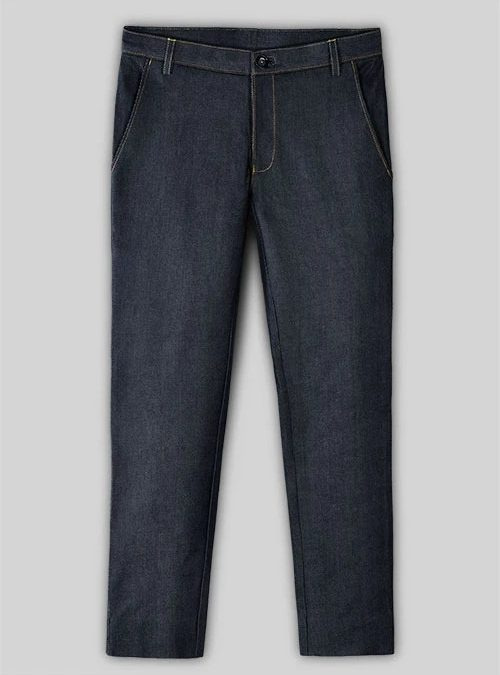
by MakeYourOwnJeans | denims, jeans |
Denim pants offer a stylish, versatile alternative to traditional cotton trousers. You can wear them year-round in most if not all of your casual outfits. Assuming you choose the right color, you can even wear denim pants in semi-formal outfits. If you’re thinking about buying a pair of denim pants, though, you may have some questions. Below are some of the most frequently asked questions about denim pants. What Are Denim Pants Made Of? Denim pants live up to their namesake by featuring a denim construction. They are typically made entirely of denim. Denim, of course, is a durable textile consisting of cotton. The weft thread of the cotton goes under at least two warp threads. This weaving pattern results in a diagonal ribbing that’s strong and durable. Regardless, denim pants are made of denim. How Do Denim Pants Differ From Jeans? The terms “denim pants” and “jeans” are often used synonymously when describing trousers made of denim. Both denim pants and jeans are made of denim. With that said, jeans are typically thicker and heavier denim pants. When viewed from afar, they may look the same. But if you compare them up close, you’ll probably notice that jeans are heavier and thicker than denim pants. What Are Selvedge Denim Pants? Selvedge denim pants are characterized by their use of selvedge denim. They are still made of denim. Rather than ordinary denim, though, they are made of selvedge denim. Selvedge denim is a type of premium, high-quality denim that’s made on old-style shuttle looms. There are modern projectile looms, and there are shuttle looms, the latter of which were...








